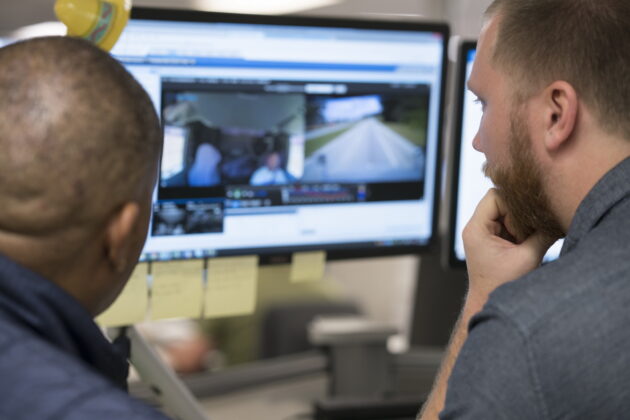While outward-facing dash cameras are becoming more common, trucking companies are increasingly asking the question of whether they can use driver-facing dash cams to monitor their drivers, and if so, what privacy laws apply.
Generally, driver-facing dash cams can be installed and used on a limited basis, but a company should strongly consider the purposes for which it wishes to use the camera, and whether there are less-invasive ways to gather the information that it needs. If a driver-facing camera is used, there are privacy policy and notice requirements that will apply to the trucking company, in addition to restrictions on data collection, use, disclosure and storage.

Privacy legislation
Personal information means any information about an identifiable individual. This can include the person’s name, age, address, financial information, preferences and even images, among other information.The Personal Information Protection and Electronic Documents Act (PIPEDA) governs the protection of personal information of employees, where they are employed by a federal work or undertaking. This includes extra-provincial motor carriers, which operate beyond the boundaries of a single province or territory.
In provinces that have not enacted their own privacy legislation, PIPEDA also applies in relation to the personal information of identifiable individuals who are not employees. For motor carriers, this includes personal information about individuals who are owner-operators and independent contractors, and the drivers employed by independent contractors.
Privacy at work
Employees are expected to have some privacy at work, but there is still a general expectation that some of their privacy will be given up while working. However, employers are required to balance their “need to know” about an employee’s personal information with that employee’s right to privacy.
Here are some compliance tips for motor carriers that use driver-facing dash cameras:
- The company should only collect personal information that it actually needs and for appropriate purposes. The recording of the employee would constitute personal information for the purposes of PIPEDA.
- The company should consider the reasons why it wishes use the driver-facing dash cams, whether there is a legitimate business reason for using them, and whether there is a less invasive way to obtain that information.
- The driver must have knowledge and have consented to the use of the camera, before it is installed and used.
- Communicate the purpose for the cameras to the drivers, explain how the dash cam will work and how the company intends to collect the personal information, how it will be storing it, when it would be disclosed and what it will be doing with that information.
- Avoid using cameras that continuously record the driver. Instead, it should only turn on when there is a hard brake, or at random intervals, and only record for a very limited period of time.
- If the installation of the dash-cams is going to be done on a random basis or if the intent is to continuously monitor only certain drivers, then the particular driver needs to be informed.
- Avoid monitoring everything the driver is doing at all times, and instead only review the footage if there is a real reason to do so.
- Be sure to limit the number of persons who have access to the footage.
- The footage must be stored in a safe and secure manner.
- Use the recordings only for the limited purposes for which the information was collected, and only keep the recordings for as long as they are needed for that purpose, unless the company has the driver’s consent to do otherwise.
- If requested by the employee, provide the employee with access to his or her recordings and other personal information on file. The employee should have the right to challenge the accuracy and completeness of it.
The details in the list above should not only be implemented in practice but also be reflected in a privacy policy that specifically relates to the dash cams. The policy should be circulated to all drivers who will be in a vehicle with a driver-facing camera. If possible, the company should try to obtain signatures from the drivers acknowledging that they have read and understand the policy.
Other considerations
There may be other implications of recording your drivers. The footage might reveal information that could be harmful or unhelpful if used as evidence during litigation. There may also be additional considerations if any of the employees are unionized.
Key takeaways
Driver-facing dash cameras should only be used with the knowledge and informed consent of the driver. The cameras should not be used if there is a less-invasive way to obtain the required information. Cameras that continuously monitor the driver should be avoided and instead, recordings/snapshots should be limited to random intervals or aggressive events (e.g. hard stops).
The purpose and need for the camera, what information it will collect, how that information will be accessed, stored and disclosed, and the other information described above should be reflected in a privacy policy that the driver has reviewed. If you have any questions about how to implement proper privacy practices for dash cams, please feel free to reach out to Miller Thomson’s Transportation & Logistics Team.